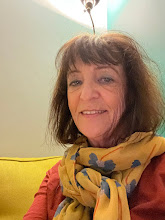Keith Sonnier was born in the heart of Cajun country, Mamou, Louisiana, best known for its food, music, and rowdy Mardi Gras celebrations. The visual artist moved to New York City early in his career and became part of its art scene. His contemporaries include Carl Andre, Dan Flavin, Sol LeWitt, ..., and he is associated with the post-minimalist movement. After experimenting with various media, Sonnier gained international recognition with his neon sculptures. Keith Sonnier: Until Today at the New Orleans Museum of Art is a retrospective of the seventy-seven-year-old artist's work. The exhibition includes more than thirty of his iconic sculptures, early videos and a large immersive installation.
 The show's entrance is like an invitation to Keith Sonnier's world. Waves of neon lights suspended from the ceiling like celestial decorations reflect on the shiny floor below, leaving puddles of colors. Passage Azur, 2015/2019, is paired with Quad Scar, 1975, an alignment of ship to shore black boxes aligned on both sides along the walls and broadcasting weather reports. The passageway leads to a succession of smaller galleries organized by themes: "Forms in Space: Sculpture, Architecture and the Body", "Industry, Agriculture, and the Everyday", "Future Ruins: Technology and Monument", "Global Influence", " Portals and Passageways" and "Evoking Louisiana: Color and Light". Each sculpture/installation (hung on the walls or in the round) is introduced by a text and is allotted enough space to spread its glow and shadow. While the first rooms are filled with pieces from the late sixties, the following displays are a mix from different periods. For example, "Industry and Agriculture", features Deux Pattes, 1982, and New Blatt Cinema (Cinema series), 2016, both semi-abstract. Farther, one can find a collection of works inspired by Sonnier's trips abroad, Japan in 1984 or Greece in 2011. The heart of the exhibition is a large site specific installation from the museum's permanent collection. Fluorescent Room, 1970/2019 offers views from two opposite windows into a cave-like structure covered with splashes of orange and green fluorescent paint. Close by, three videos from the sixties provide a glimpse into a period of experimentation with the new medium in collaboration with other artists like Tina Girouard.
The show's entrance is like an invitation to Keith Sonnier's world. Waves of neon lights suspended from the ceiling like celestial decorations reflect on the shiny floor below, leaving puddles of colors. Passage Azur, 2015/2019, is paired with Quad Scar, 1975, an alignment of ship to shore black boxes aligned on both sides along the walls and broadcasting weather reports. The passageway leads to a succession of smaller galleries organized by themes: "Forms in Space: Sculpture, Architecture and the Body", "Industry, Agriculture, and the Everyday", "Future Ruins: Technology and Monument", "Global Influence", " Portals and Passageways" and "Evoking Louisiana: Color and Light". Each sculpture/installation (hung on the walls or in the round) is introduced by a text and is allotted enough space to spread its glow and shadow. While the first rooms are filled with pieces from the late sixties, the following displays are a mix from different periods. For example, "Industry and Agriculture", features Deux Pattes, 1982, and New Blatt Cinema (Cinema series), 2016, both semi-abstract. Farther, one can find a collection of works inspired by Sonnier's trips abroad, Japan in 1984 or Greece in 2011. The heart of the exhibition is a large site specific installation from the museum's permanent collection. Fluorescent Room, 1970/2019 offers views from two opposite windows into a cave-like structure covered with splashes of orange and green fluorescent paint. Close by, three videos from the sixties provide a glimpse into a period of experimentation with the new medium in collaboration with other artists like Tina Girouard. The walk through the entrance is an immersive experience with lights, reflections, glows, shadows and sounds reverberating on the walls. In contrast, a peak in Fluorescent Room is somewhat frustrating as one misses the sensation of bathing in colors like in Chromosaturation, 1965, from Carlos Cruz-Diez or more recently the Pop Cosmic Caverns from Kenny Scharf.
The walk through the entrance is an immersive experience with lights, reflections, glows, shadows and sounds reverberating on the walls. In contrast, a peak in Fluorescent Room is somewhat frustrating as one misses the sensation of bathing in colors like in Chromosaturation, 1965, from Carlos Cruz-Diez or more recently the Pop Cosmic Caverns from Kenny Scharf.The visit is like a voyage in time and space, from the late sixties until today, from Louisiana to the Far East. Through the combination of electrical wires, fabrics, wood, transformers, porcelain, artifacts, bamboo, found objects and neon or argon lights, the works connect distant cultures. Swamps' ghosts haunt Fluorescent Room also filled with shimmering colors evocative of festive celebrations in India. Back and forth from semi-abstract to conceptual, Sonnier uses all languages to spread his message.
The exhibition gathers works from a number of series: from early Neon Wrapping Incandescent Series in 1968, Ba-O-Ba Series 1969, Herd Series, 2008, to Portal Series, 2015, and more. Spanning the artist's career, it emphasizes the relevance of his body of work to today's world and provides an overdue recognition of Sonnier's originality in his creativity.
photographs by the author:
"Passage Azur", 2015/2019 (detail)
"Neon Wrapping Incandescent II (Neon Wrapping Incandescent Series), 1968
"Propeller Spinner (Antenna Series), 1990

